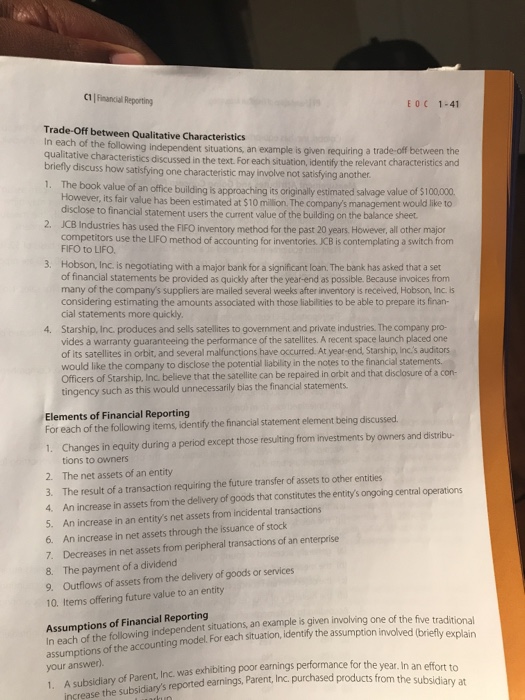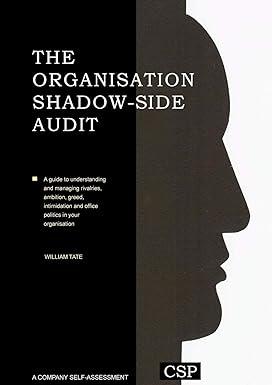C1 | Financial Reporting Eo C 1-41 Trade-Off between Qualitative Characteristics In each of the following qualitative characteristics discussed in the text. For each situation, identify the relevant briefly discuss how satisfying one characteristic may involve not satisfying another independent situations, an example is given requiring a trade-off between the characteristics and 1. The book value of an office building is approaching its originally estimated salvage However, its fair value has been estimated at $10 million. The company's management would like to value of $100,000 disclose to financial statement users the current value of the building on the balance sheet 2. CB Industries has used the FIFO inventory method for the past 20 years. However, all other major competitors use the LIFO method of accounting for inventories. JCB is contemplating a switch from FIFO to LIFO 3. Hobson, Inc. is negotiating with a major bank for a significant loan. The bank has asked that a set of financial statements be provided as quickly after the year-end as possible. Because invoices from many of the company's suppliers are mailed several weeks after inventory is received, Hobson, Inc. is considering estimating the amounts associated with those liabilities to be able to prepare its finan- cial statements more quickly 4. Starship, Inc. produces and sells satellites to government and private industries. The company pro- vides a warranty guaranteeing the performance of the satellites. A recent space launch placed one of its satellites in orbit, and several malfunctions have occurred. At year-end, Starship, Inc.'s auditors would like the company to disclose the potential liablility in the notes to the financial statements. Officers of Starship, Inc. believe that the satellite can be repaired in orbit and that disclosure of a con- tingency such as this would unnecessarily bias the financial statements Elements of Financial Reporting For each of the following items, identify the financial statement element being discussed. 1. Changes in equity during a period except those resulting from investments by owners and distribu- tions to owners 2. The net assets of an entity 3. The result of a transaction requiring the future transfer of assets to other entities 4. An increase in assets from the delivery of goods that constitutes the entity's ongoing central operations 5. An increase in an entity's net assets from incidental transactions 6. An increase in net assets through the issuance of stock 7. Decreases in net assets from peripheral transactions of an enterprise 8. The payment of a dividend 9. Outflows of assets from the delivery of goods or services 10. Items offering future value to an entity Assumptions of Financial Reporting In each of the following independent situations, an example is given invol assumptions of the accounting mode For each situation, identify the assumptio one of the five traditional your answer). 1. A subsidiary of Parent, Inc. was exhibiting poor earnings performance for the year. In an effort to products from the subsidiary at increase the subsidiary's reported earnings, Parent, Inc. purchased







